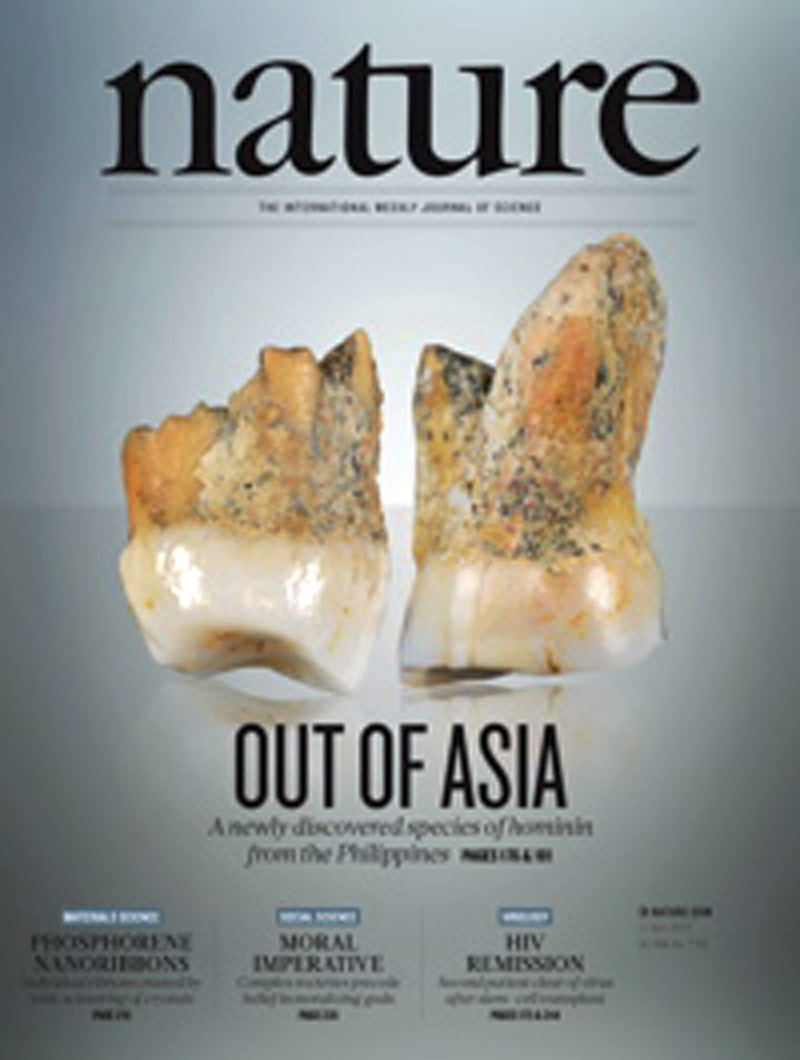Our very own Indiana Jones

It isn’t every day that a Filipino scientist captures the imagination not only of his own people but of the world, but last month, this amazing feat happened, putting Filipino science squarely on the global map.
The “feat” wasn’t just one event but the culmination of many years of painstaking work, research, and analysis, culminating in the publication of the results in Nature magazine of a cover article titled “Out of Asia: A newly discovered species of hominin from the Philippines,” attributed to an international team including Filipino archeologists Armand Mijares, Eusebio Dizon, and Emil Robles. The article announced the discovery of what the team named Homo luzonensis, a new and previously unknown hominin or human-like species. (For a laymanized version of the article, see here: https://www.nature.com/articles/d41586-019-01152-3.)
The discovery consisted of about a dozen small bones found over several years in Callao Cave in Peñablanca, Cagayan, which taken together indicate that an early form of man lived here at least 50,000 years ago. Dr. Mijares, an associate professor with the University of the Philippines’ archeological studies program who led the international team, had been excavating the area since the early 2000s. In 2007, the digging paid off with the discovery of a foot bone “dated to 67 thousand years ago (which) provided the earliest direct evidence of a human presence in the Philippines,” according to Nature. The discovery radically questions and reforms previous theories about human migration in Southeast Asia.
As exciting as the unearthing of luzonensis was, almost just as important was the fact of Mandy Mijares—a UP Manila graduate who took his PhD at the Australian National University—getting published in Nature, which stands at the very pinnacle of scientific publishing. As another well-known UP scientist and a good friend of Mandy’s, the geologist Dr. Mahar Lagmay, puts it, “It is every serious researcher’s dream and struggle to publish in this journal. Out of the 15,000 manuscript submissions that the editorial board of Nature receives a year, only 1,000 or approximately 7% are accepted for publication. Only 2% of science journals have an impact factor of 10 or higher. In 2017, Nature’s IF was 41.57—equivalent to publishing 40 articles in most other scientific journals.”
Mandy also happens to be a brother of mine in UP’s Alpha Sigma fraternity, and last week, the brods honored our very own Indiana Jones in a public program at the Asian Center, where he also presented his findings. I was asked to say a few words, and here’s part of what I said:
I had been hearing about this discovery from Brod Mandy in my private conversations with him over the past two years, and I knew he was sitting on something literally groundbreaking but even I had no sense of the magnitude of his project until I saw it on the cover of Nature. In my lectures on science journalism, I often refer to Nature as the one of the summits of scientific publishing. It’s hard enough to get published in, and much, much harder to land on the cover of. That’s what Mandy Mijares has been able to do.

The April 2019 cover of Nature magazine
But bragging rights aside, the joy I share with Mandy comes from seeing scientific inquiry and intellect recognized and rewarded in an environment that has become increasingly indifferent if not hostile to intelligence, indeed to the search for truth. Sophistry and opportunism have overtaken scholarship and honest labor, and political hacks purport to know and dispense the truth better than scientists and artists remote from the centers of money and power.
The discovery of luzonensis reaffirms the role of a university not just in its own country but in the world at large—in spearheading and supporting the pursuit of knowledge, even knowledge that will probably not add one percentage point to GDP or have any practical application we can think of at the moment, but which enlarges our understanding of ourselves as humans.
The question that luzonensis poses for us in the 21st century is, how much farther have we truly come along as humans from our hominin ancestors, and what have we done with our humanity? Are we any less crude, any less brutal? Could it be that luzonensis was more caring for its own kind than we are today with ours? What have we done with our larger brains, our gift of language, with which we have become so facile that we can now distort the truth without batting an eyelash and even look smart and smugly smile and be praised by others for how cleverly we get away with murder? Faced with a creature that may have had no appreciation or even need for truth, reason, and justice, what does it say about us today, many millennia later, at a time when a good many of us seem to be in the same position, and let me repeat—with no appreciation or need for, and perhaps just a flickering memory of, truth, reason, and justice?
I’ll stop here before my sadness gets the better of me and beclouds the brightness of the hour, which properly belongs to Homo luzonensis and its brilliant discoverer. I’ll end with our fraternity’s exhortation to seek excellence in all endeavors—or I should say, in all good and just endeavors. Mabuhay ka, Brod Mandy!
Email me at jose@dalisay.ph and visit my blog at www.penmanila.ph.



















